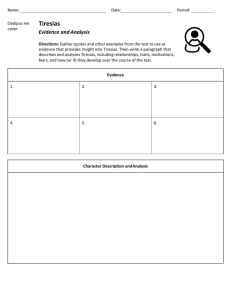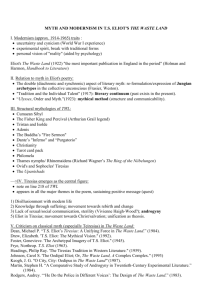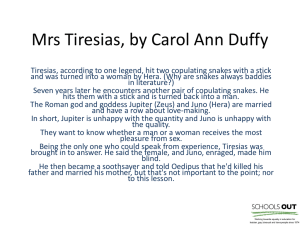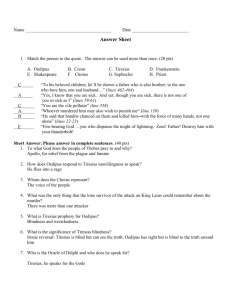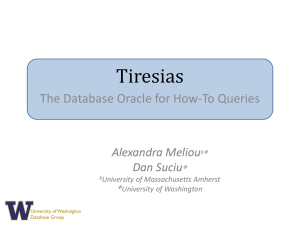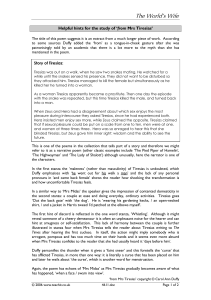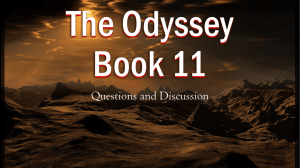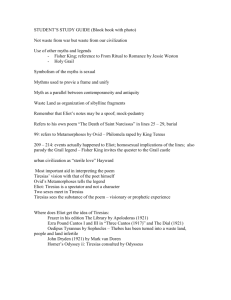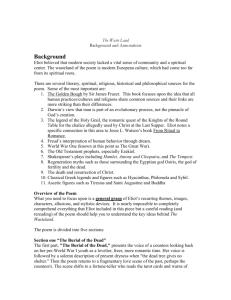In The Waste Land
advertisement
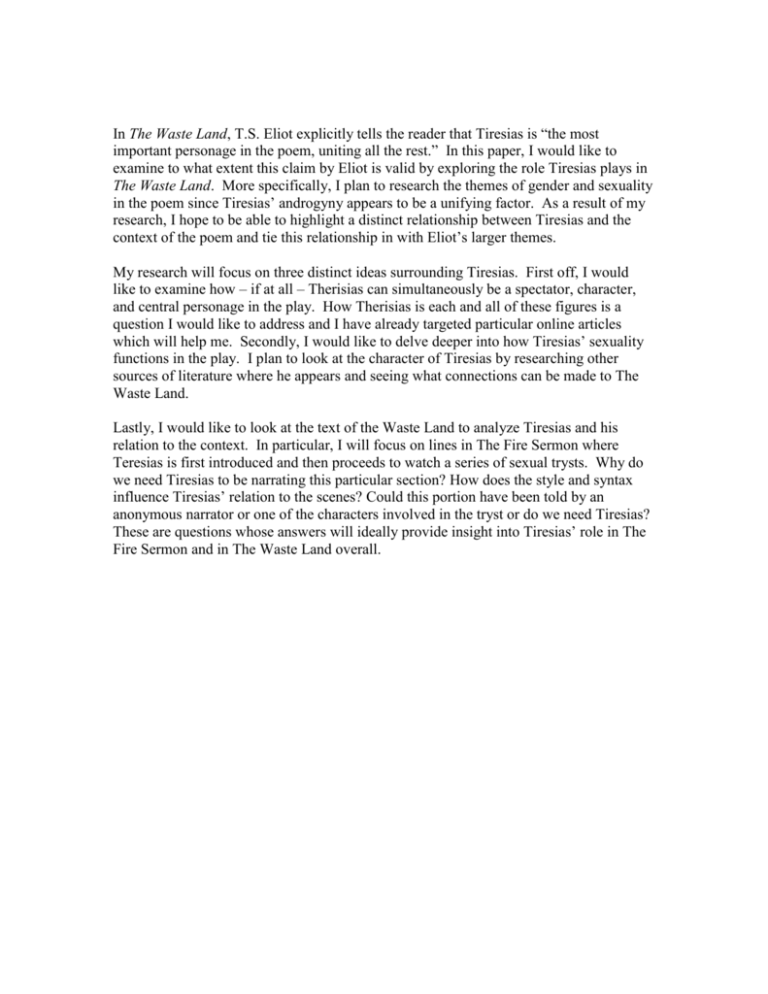
In The Waste Land, T.S. Eliot explicitly tells the reader that Tiresias is “the most important personage in the poem, uniting all the rest.” In this paper, I would like to examine to what extent this claim by Eliot is valid by exploring the role Tiresias plays in The Waste Land. More specifically, I plan to research the themes of gender and sexuality in the poem since Tiresias’ androgyny appears to be a unifying factor. As a result of my research, I hope to be able to highlight a distinct relationship between Tiresias and the context of the poem and tie this relationship in with Eliot’s larger themes. My research will focus on three distinct ideas surrounding Tiresias. First off, I would like to examine how – if at all – Therisias can simultaneously be a spectator, character, and central personage in the play. How Therisias is each and all of these figures is a question I would like to address and I have already targeted particular online articles which will help me. Secondly, I would like to delve deeper into how Tiresias’ sexuality functions in the play. I plan to look at the character of Tiresias by researching other sources of literature where he appears and seeing what connections can be made to The Waste Land. Lastly, I would like to look at the text of the Waste Land to analyze Tiresias and his relation to the context. In particular, I will focus on lines in The Fire Sermon where Teresias is first introduced and then proceeds to watch a series of sexual trysts. Why do we need Tiresias to be narrating this particular section? How does the style and syntax influence Tiresias’ relation to the scenes? Could this portion have been told by an anonymous narrator or one of the characters involved in the tryst or do we need Tiresias? These are questions whose answers will ideally provide insight into Tiresias’ role in The Fire Sermon and in The Waste Land overall.
